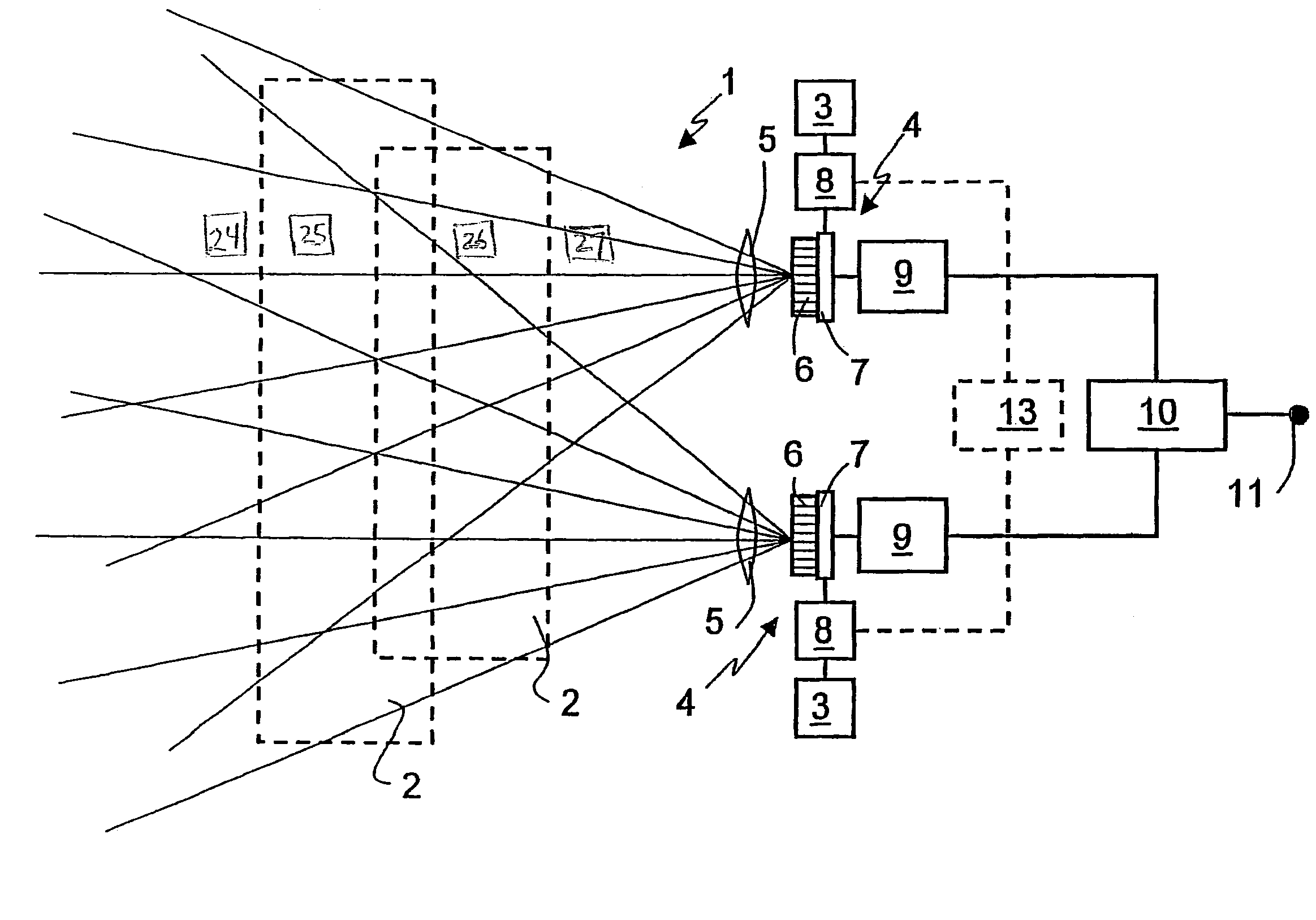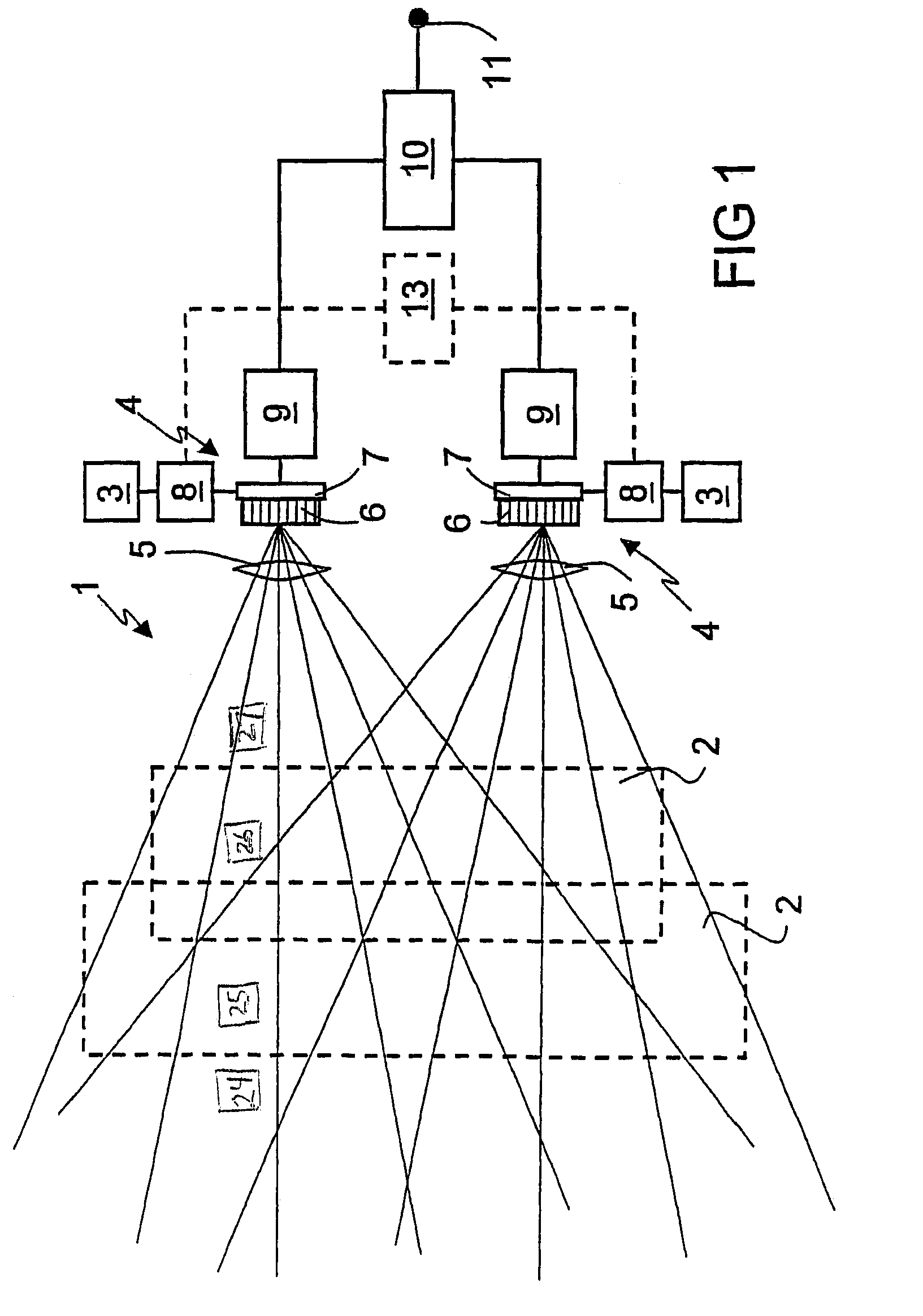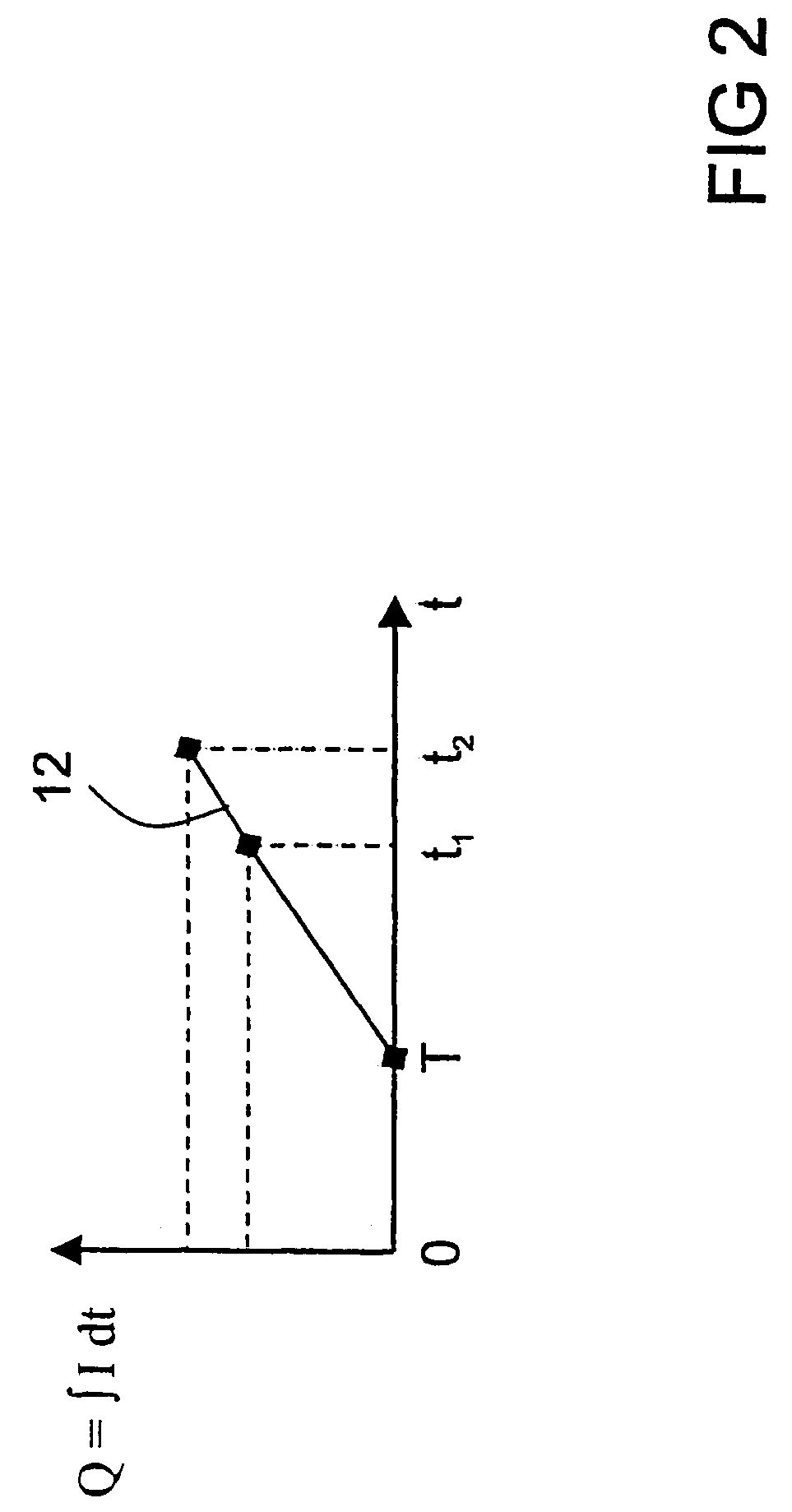Device for monitoring spatial areas
a technology for spatial areas and devices, applied in distance measurement, surveying and navigation, instruments, etc., can solve the problems of people's shoes melting, high susceptibility to failure of known light curtains, and high assembly and method costs, so as to reduce the susceptibility to failure of devices and improve work safety.
- Summary
- Abstract
- Description
- Claims
- Application Information
AI Technical Summary
Benefits of technology
Problems solved by technology
Method used
Image
Examples
Embodiment Construction
[0028]FIG. 1 shows the monitoring device 1 for monitoring spatial areas 2. The monitoring device 1 has emitters 3, which emit short radiation pulses towards the spatial areas 2 to be monitored. The emitter 3 comprises LEDs or lasers, which preferably emit in the infrared wavelength range. The radiation pulses are reflected back from objects in the spatial areas 2 to the receivers 4. The receivers 4 comprise an optical system 5, by means of which objects in the spatial areas 2 can be mapped onto pixels 6 of a CMOS sensor 7 with short-time integration. The CMOS sensor 7 is a monolithically integrated optoelectronic semiconductor sensor, which was produced using CMOS technology. It should be possible to control each of the individual pixels 6 of the CMOS sensor 7, if required. The pixels 6 of the CMOS sensor 7 each respectively comprise a photodiode and an assigned pixel capacitor, which is charged by exposure of the photodiode when the time measuring window is open. The residual charg...
PUM
 Login to View More
Login to View More Abstract
Description
Claims
Application Information
 Login to View More
Login to View More - R&D
- Intellectual Property
- Life Sciences
- Materials
- Tech Scout
- Unparalleled Data Quality
- Higher Quality Content
- 60% Fewer Hallucinations
Browse by: Latest US Patents, China's latest patents, Technical Efficacy Thesaurus, Application Domain, Technology Topic, Popular Technical Reports.
© 2025 PatSnap. All rights reserved.Legal|Privacy policy|Modern Slavery Act Transparency Statement|Sitemap|About US| Contact US: help@patsnap.com



